Drawing Styles – Finding Your Unique Sketching Style
We are all taught a few simple drawing styles from a young age. However, if you want to gain more skills, you might want to try your hand at some different drawing styles. By learning about and experimenting with various simple art styles, you can begin to develop your unique approach. To get you started, we have made a collection of the most popular drawing styles.
What Are Drawing Styles?
Drawing is the basic foundation of many creative activities from fashion designers to different types of artists. It is an activity whereby you draw on a surface to create shapes and images. There are numerous drawing styles available and many examples you can learn from such as Pablo Picasso, it all depends on how you want to express yourself. Your particular drawing style can depend on your skill level, your preferences, interests, and even on your education, and cultural background can influence your specific style.
How much time you spend on your drawing can also influence the quality. You can see this by comparing quick sketches to applying yourself to hours of work on a detailed drawing. Discovering what drawing style, you prefer can take time, experimentation, and practice. It can also depend heavily on the type of medium you like to use, such as graphite, charcoal, pastels, crayons, chalk, and markers to name a few. There are even digital drawing options now available.
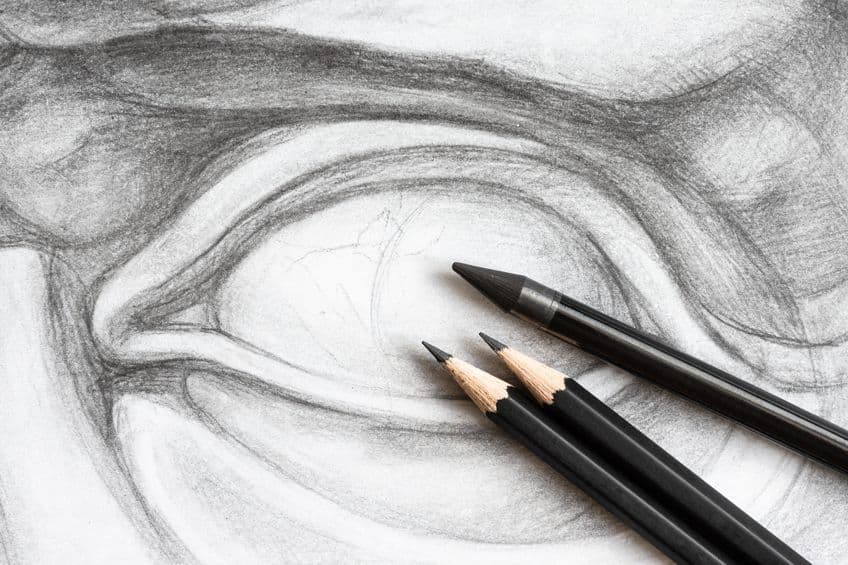
Drawing can also be done on the move, at home, or in a studio. If there is a particular media you enjoy using, then experiment with it. However, not all of these drawing media are suited to every drawing style. For example, crayons are not a good idea for creating hyperrealism drawings. On the other hand, if you have a favorite medium, such as watercolors, you can adapt this to a specific drawing style. For example, you can use watercolors to create hyperrealism drawings.
Drawing is a wonderful art form, but it also requires technical skills. There are techniques you need to learn and understand. Many drawing styles can be more technical than others. Honing these skills will help you to improve your art form and help you enjoy the process more.
Drawing is also not just a hobby, many career options involve drawing. Even careers in math, engineering, or science may need drawing skills. Let us have a look at a few more specific careers you can choose from.
- Architect
- Art teacher
- Animator
- Fashion designer
- Illustrator
- Tattoo artist
- Advertising designer
- Interior designer
- Editorial cartoonist
- Graphic designer
Types of Drawing Styles
There are quite a few different drawing styles, and many of these can branch off into further sub-styles of drawing. The possibilities are literally endless. Many skilled artists use multiple drawing styles, and many have created their own unique style. Some drawing styles require more patience and skill, while other styles are more unrestricted. We will now be discussing a few types of different drawing styles.
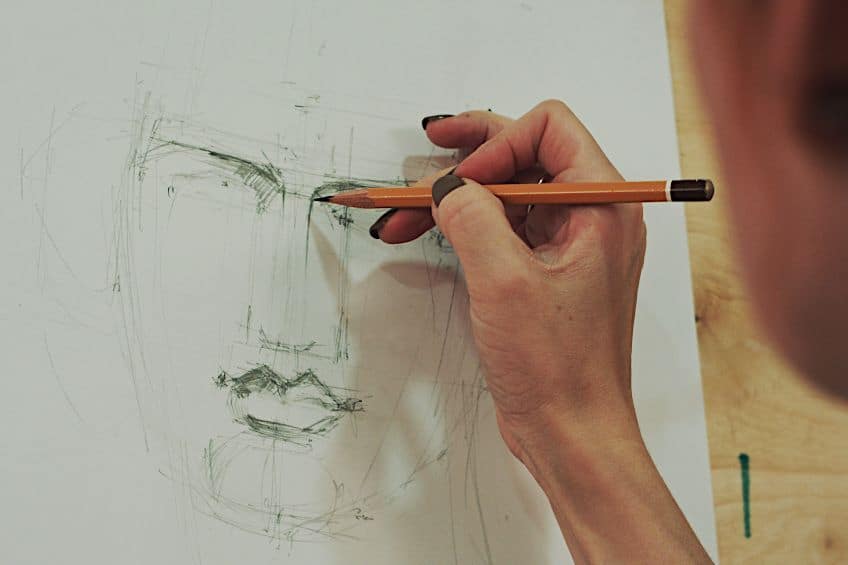
Abstract Drawing Styles
Drawings for this can appear simple or distorted, and often uses shapes, patterns, and colors to create an image. You can have a subject in mind, but most pieces consider just the above and other elements to create a successful art piece. Some might also use a part of a subject’s face or refer to something real, for example, and then bring in other images, which is more a form of Surrealist art.
You can say both of these techniques create more of an unconventional form of art.
Academic Drawing
These sketch types have been done for many years. This form of visual art teaches the basics of drawing and focuses on form, shape, line, and the understanding of technical art skills. The style developed under the influence of European, mostly French academies of art and consisted mainly of drawings, paintings, and sculptures of the nude. This whole style of art would influence and inspire artists all over the world.

Classical Drawing Styles
Classic examples of art originate from Ancient Greek and Rome; however, these styles were built upon by what is known as “the old masters” who then taught students. This then became the classical technique used today. Classical drawings commonly portray forms or scenes in a romanticized or glorified way. However, the drawings still have a sense of accuracy and proportion.
Some of these “old masters” include Rembrandt and Leonardo da Vinci.
Caricature Drawing
Caricature sketches are oversimplified or exaggerated drawings of subjects, to create an almost comedic version of the subject. For example, this could mean drawing disproportionate facial features. It could also involve the personification of an object, and is often used for animation, advertising, or in the graphic design field. Some artists might even sit on the street corner and offer quick caricature drawings of passersby.

Cartoon Art Styles
Cartoon drawing styles are varied, but some are more comedic than others and involve character drawings of people and animals. There are many techniques involved in creating cartoons that produce different shapes, colors, and tones. The various cartoon art styles can be used for entertainment, advertising, illustrations, and in graphic designs. The original comic books contain cartoon-style characters and are divided into panels, which depict each scene. Usually, speech bubbles help to tell the story.
This type of cartoon storytelling is also used for editorial purposes seen in newspapers and magazines, which tell a story, a joke, or touch on a relevant topic.
Then you get the old-school cartoon hand-drawing style that was the beginning of animation, for example, Mickey Mouse. Modern animation styles today rely on computer-generated graphics. Here are some other interesting cartoon sketch types.
- Modern-style cartoon drawings: This style uses colors, thick lines, and geometric shapes that help make the animation process go faster. For example, The Powerpuff Girls.
- Realistic cartoon style: These drawings tend to have more detail to them, with more realistic shapes. Caricatures can also fall under this category.
- Manga: A Japanese drawing style, which often uses distinctive large eyes and small mouths. Characters are also placed in unique settings or fantasy realms, and usually have some sort of abilities.

- Other Japanese drawing styles: The modern anime style has more complex drawings, and chibi drawings, which are cute art styles focusing on developing tiny or mini characters.
- Unique drawing styles: These are developed by artists who have made a name for themselves. For example, the Peanuts cartoon done by Charles M. Schulz, or the Dragon Ball cartoon series done by Akira Toriyama.
Doodling
Doodling is a simple drawing style that can be done without any skill or thought. This drawing style is used to help your mind relax and can be anything from different lines, shapes, or more complex patterns. Mandalas are popular patterns that you can draw. You can use pencils, pens, or markers that are quick and easy to use.
This is a great way to pass some time if you have to wait for something, like at a dentist’s office.
Fantasy Drawings
This style of drawing creates fantasy worlds and creatures. You can try and come up with your own ideas, or get a few ideas from books or online images. This has also become a popular digital drawing style. There are no rules to what you can create, all you need to do is use your imagination.
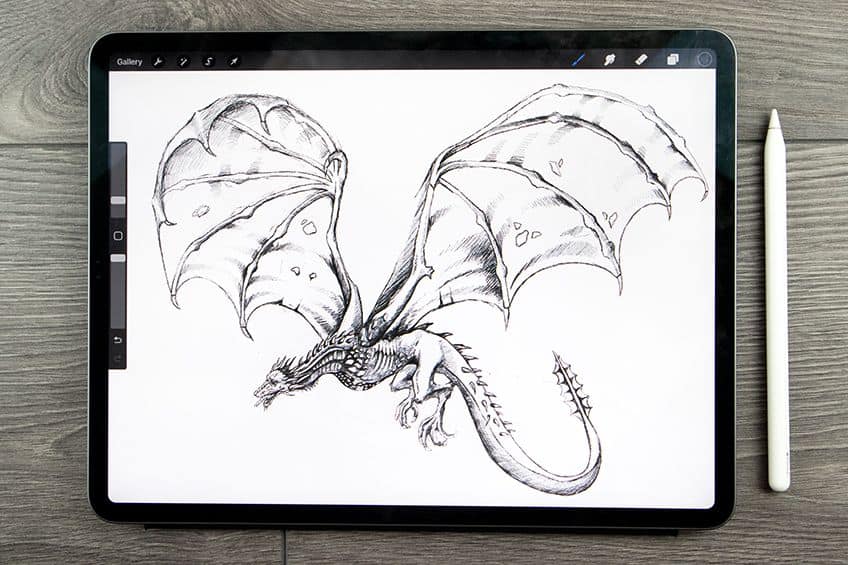
Geometric Drawing
This style focuses on using geometric shapes to produce various designs and artwork. The idea can be simple and two-dimensional, or you can create a more complex drawing and create three-dimensional forms. You can easily use paper and a pen for this or use computer graphics to create a drawing.
In many cases, engineers and architects will use this drawing style, but it has also become popular among artists.
Figure Drawing
This could fall under academic or classical drawing styles, but it can also have its own place. Figure drawing is also called still-life drawing, so it does involve human models but it can also include other objects like fruit. The purpose of this simple drawing style is to capture the world as the artist sees it.
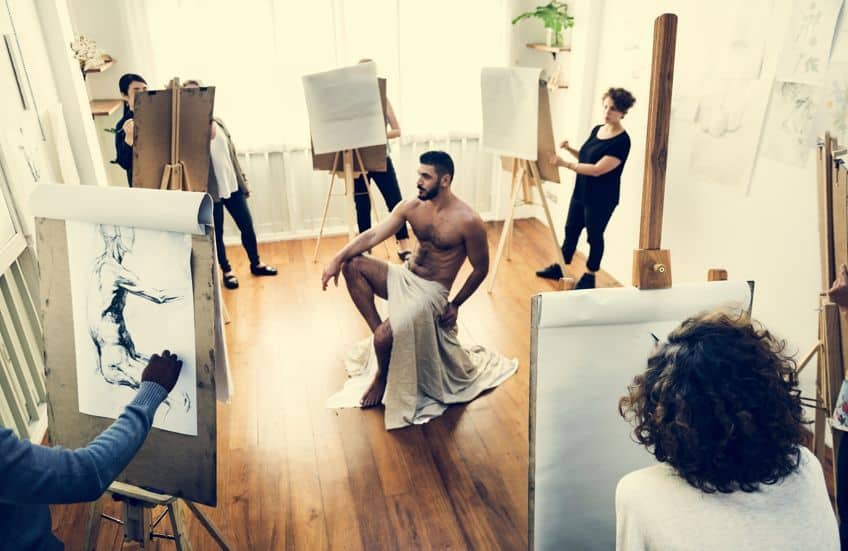
Figure drawing is often used as a base from which to teach the basics of drawing, which involves proportions, perspective, as well as shading. On the opposite side of figure drawing, you can have gesture drawing, which uses real-life subjects but focuses more on the movement of the subject. The aim is to capture the form and action of the subject.
Line Sketching Styles
Line sketching may seem part of other simple art styles, but it can be quite challenging to achieve. This sketching style uses straight lines and shapes or curves without color or shading. Most artists create a line drawing without picking up their pencil or pen from beginning to end. The main idea is to focus more on the lines, without highlighting any specific details.
The most common medium used for this drawing style is a pen and ink.
Perspective Sketching Styles
This drawing technique helps to create a linear impression of depth and is a little more complex to achieve. The object you draw will appear solid, realistic, and three-dimensional when looking at it due to the use of perspective lines. Another example of this style is known as anamorphic art. The aim is to create a three-dimensional picture using a two-dimensional surface. To achieve this, you need to consider distance, angle, surface, light, and scale. The image may first appear to be distorted, but from a certain viewpoint, it creates an optical illusion, and the image is made clear, almost jumping out at you.
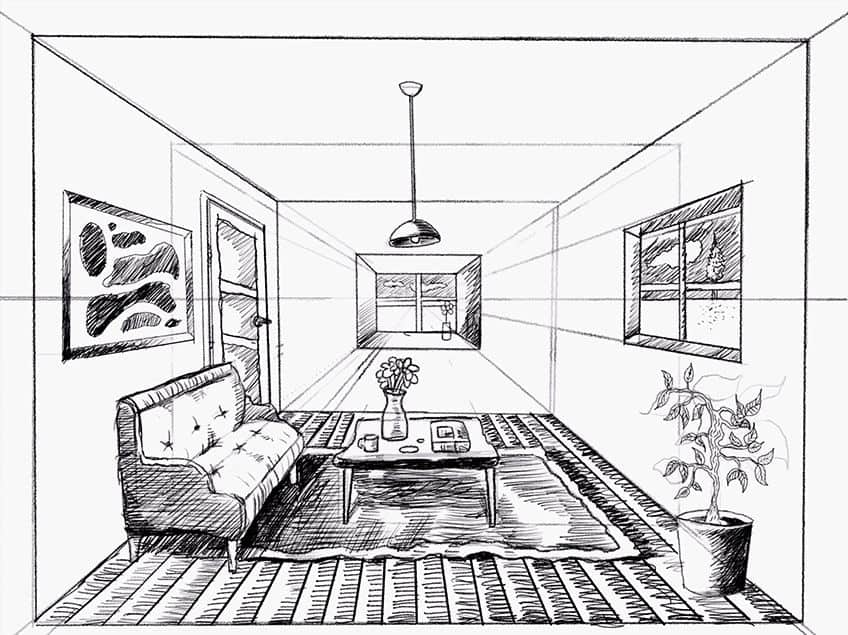
Pointillism
This is also known as stippling and is a sketching style that uses dots and not lines to create an image. You can achieve this by first drawing your image with a pencil, and once there is a basic shape, you can begin to add dots. The closer you place the dots, the darker the area will appear. When done, the final image can be quite eye-catching.
Some can be simple images, while others are extremely detailed. This drawing style first became known in the 19th century, during the neo-impressionist movement.
Artists like the French painter Paul Signac and Georges Pierre Seurat were the first to develop this method. Stippling can be mistaken for pointillism, however, stippling is a drawing technique that makes use of a single color, while pointillism can use different colors. A sharp graphite pencil or fine pen works best for stippling.
Photorealism
This type of drawing style has become quite popular. The drawings made, seem very real and can sometimes be confused with a real photo. This can be used for a human subject, however, all types of animals as well as landscapes are also popular. The artists will focus on details, shading, and contours to produce the most realistic image.

Scribble Drawings
Scumbling as well as scribbling are both drawing techniques. These techniques use many small scribbles and small circles to help create texture, depth, as well as gradient within a drawing.
This style of drawing creates very expressive images that can be seen as unconventional.
Simple Sketch Drawings
Simple art styles like this are often done quickly and may appear to be unfinished or less refined. This drawing style is often used as the initial concept drawing, or as a work in progress when artists want to capture something quickly. The artist simply captures the basic lines and shapes to create a rough sketch. This initial sketch can then be perfected later. Any dry medium can be used, but a pencil is the most popular as you can erase lines.
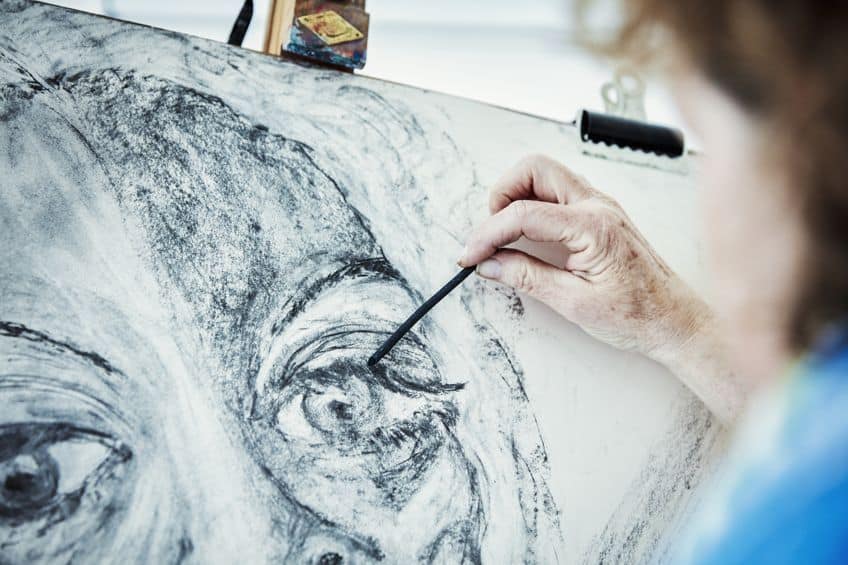
This simple drawing style can be used in various situations, for example, sometimes the media is not allowed in courtrooms, so a sketch artist must help illustrate what is happening. The focus is mostly on the people involved, and even though the sketches are done fairly quickly, some can contain a lot of detail. Fashion designers can also do quick sketches of their ideas, creating figures and clothing ideas. The figure usually does not have facial features or other details, as the focus is more on the shape and color of the clothing item.
Silhouette Drawing
This style uses a single tone and hue to create an outlined shape, also known as a silhouette. These are usually in black and white, with one color as the background, while the other forms the silhouette. There are no details to the image and is a popular method for creating profile portraits.
However, the silhouette can also be of anything that interests you from animals to people in various poses.
Technical Drawing
This is not a simple drawing style and involves precision when drawing designs. Most engineers and other professionals will need to learn this type of drawing style. Some examples of where you will find technical drawings include the following.
- Architectural drawings: If you want to become an architect, then technical drawing forms the base of our studies. You will need to show precise building features and structures, which can be very detailed.
- Automotive drawings: These technical drawings can also be extremely detailed, showing all the mechanical aspects of a vehicle.

- Engineering drawings: Engineers will produce detailed technical drawings to develop plans and to find flaws in mechanical designs. The aim is to make things work more efficiently and safely.
- Interior design drawings: These can be a combination of technical and perspective drawings. The design is usually of a 3D setting, which is an accurately laid out interior.
Typography Drawing
As the name suggests, it is the use of letters that you can arrange into various forms and shapes. The words themselves can create the shape, or the words can be used within a shape. For example, a heart shape can be created entirely out of the word love, which is repeated to form the heart. Words can also be placed within the shape of a heart.
This can be used for many purposes from invitations to marketing logos.
How to Develop Unique Drawing Styles
Now that you have a general idea of all the drawing styles available, how can you develop your own? What style you choose can be influenced by many things from beliefs to your preferences, and interests. You can find an artist that inspires you and observe them, or if you are not sure, try to experiment with various drawing styles and mediums to see what appeals to you most.

Try out pencils, charcoal, pastels, chalk, crayons, ink, and other mediums. Artists also draw on different surfaces. You can also experiment with using various types of paper, drawing on canvas, or even wood. Of course, there is now also the ever-expanding digital drawing world to experiment with. To acquire your own drawing style, you must have patience and perseverance. Try out these ideas for further inspiration.
Begin With the Fundamentals
If you are only starting to draw, you need to learn the basics. You have to understand the various techniques and tools needed to create good art pieces. Once you have the skills, you can start to find your own drawing style.
It is also a good idea to develop a drawing habit, the more you practice, the better you will get.
Follow the Experts
To begin, you can try copying other artists so that you can practice the various drawing techniques. However, you should never plagiarize another artist, only use it as a stepping stone toward your own unique drawing style.
Doodle
This simple drawing style can be used to help you improve your skills and point you in the direction of your own style. The freedom of doodling can relax you, and while you are drawing simple lines or patterns, you may find something that you can work with.

Practice and Practice Some More
You cannot give up; you need to draw the same thing over and over. Eventually, your style will start showing through. However, you should also not overdo it, take a break. Some great ideas come when your mind is on something else, it has time to process things.
Try Something Different
You might want to explore outside your comfort zone. By doing this, you might find a style that you could have easily overlooked, as it is not something you thought would work. Also, you will naturally lean toward what you really want to draw if you are struggling with or bored with what you are trying out.
You need to try new things, or you will never know if it is something worthwhile you wish to pursue.
Persevere
Do not give up, in most cases, finding a unique drawing style takes time and a lot of work. If you put in the effort, you will start seeing the results. Making mistakes can be frustrating, however, this is part of the process. Finding your style will be at the end of many failed pieces, it is simply a matter of pushing through.

As you can see, there are simple, more challenging, and even cute art styles. It can become a little confusing when having to choose a style that suits you. Do not be afraid; go out and try a few of them to see where it leads. You might discover something new about yourself!
Frequently Asked Questions
What Is the Most Popular Simple Drawing Style?
One of the simple art styles is doodling, as it requires no special skills. When you doodle, it can be anything from simple lines and shapes to easy designs that require very little thought. You are free to do anything and there is no wrong way.
What Are Some Sketching Styles Based on Medium?
The more common mediums for drawing include pencils, both graphite and colored, crayons, charcoal, pastels, pens, and markers. Then you also have chalk, ink drawing, and other more unique drawing styles, such as sand art drawings, tattoos, and embroidery drawings.
Is There a Difference Between Photorealism and Hyperrealism?
Both these terms are very similar. However, photorealism is a drawing that can resemble a photo. Hyperrealism is a drawing that cannot be distinguished from a photo, and highlights dark and light within an image. Both terms are used interchangeably.
Matthew Matthysen is an educated multidisciplinary artist and illustrator. He successfully completed his art degree at the University of Witwatersrand in South Africa, majoring in art history and contemporary drawing. The focus of his thesis was to explore the philosophical implications of the macro and micro-universe on the human experience. Matthew uses diverse media, such as written and hands-on components, to explore various approaches that are on the border between philosophy and science.
Matthew organized various exhibitions before and during his years as a student and is still passionate about doing so today. He currently works as a freelance artist and writer in various fields. He also has a permanent position at a renowned online gallery (ArtGazette) where he produces various works on commission. As a freelance artist, he creates several series and successfully sells them to galleries and collectors. He loves to use his work and skills in various fields of interest.
Matthew has been creating drawing and painting tutorials since the relaunch in 2020. Through his involvement with artincontext.org, he has been able to deepen his knowledge of various painting mediums. For example, watercolor techniques, calligraphy and lately digital drawing, which is becoming more and more popular.
Learn more about Matthew Matthysen and the Art in Context Team.


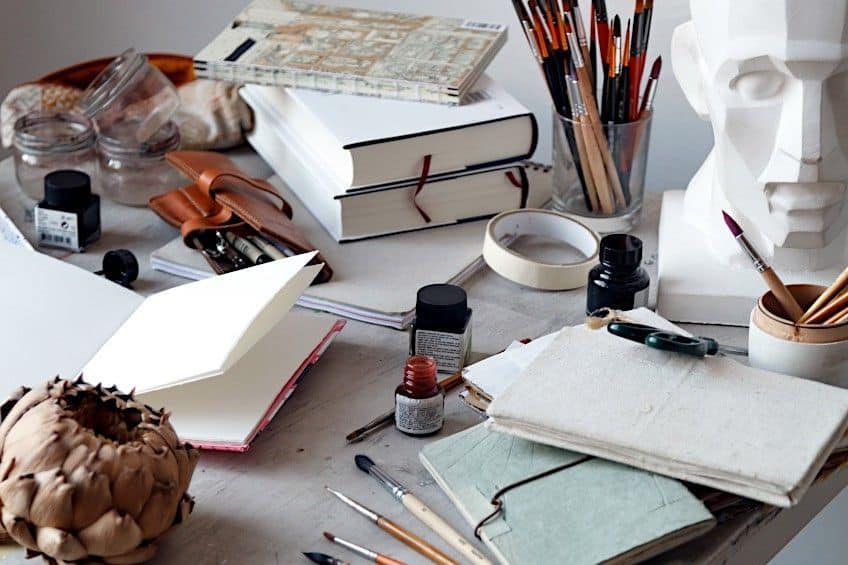



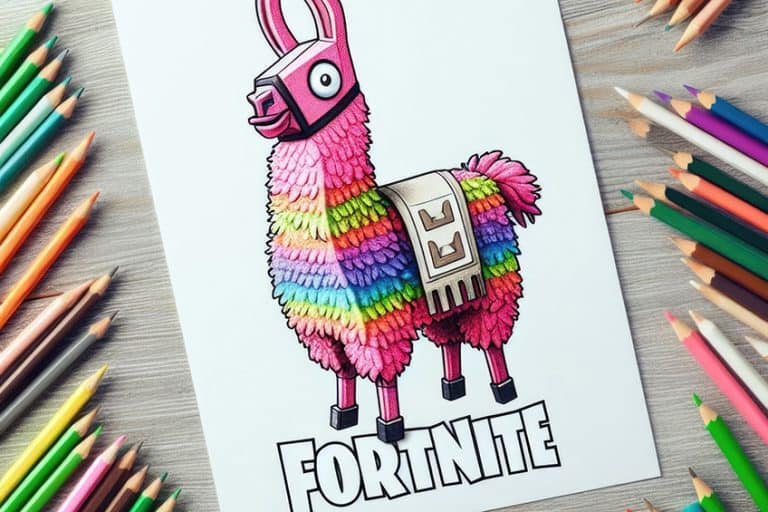
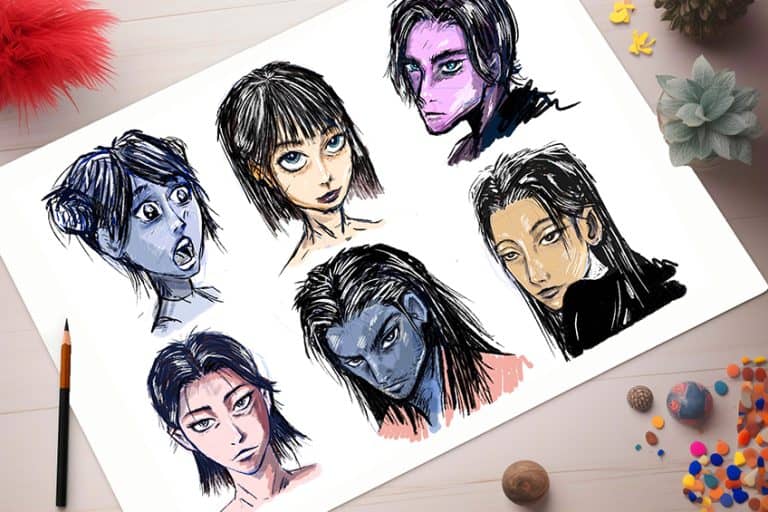


helpful for my work i want to get a information for my e mail